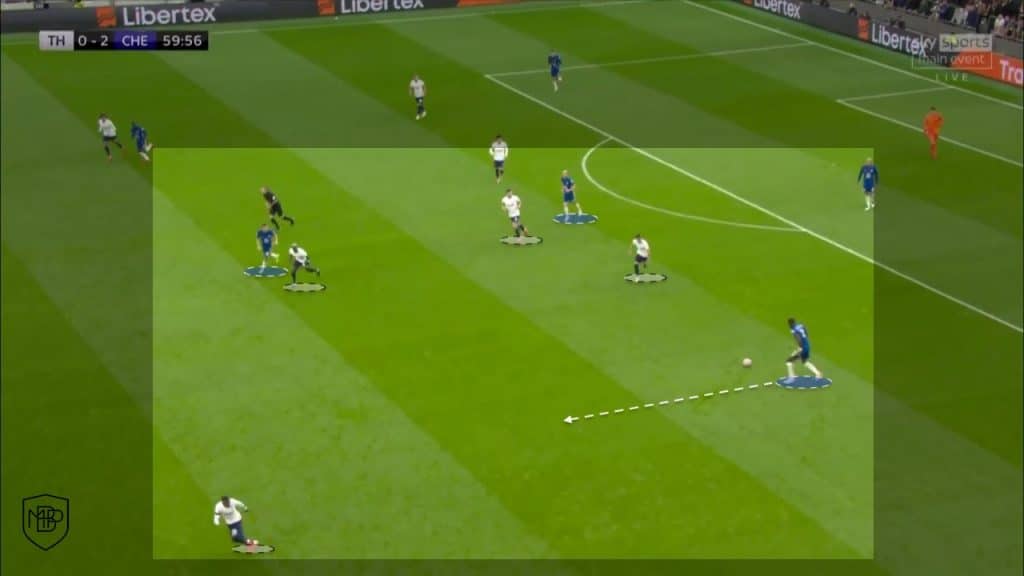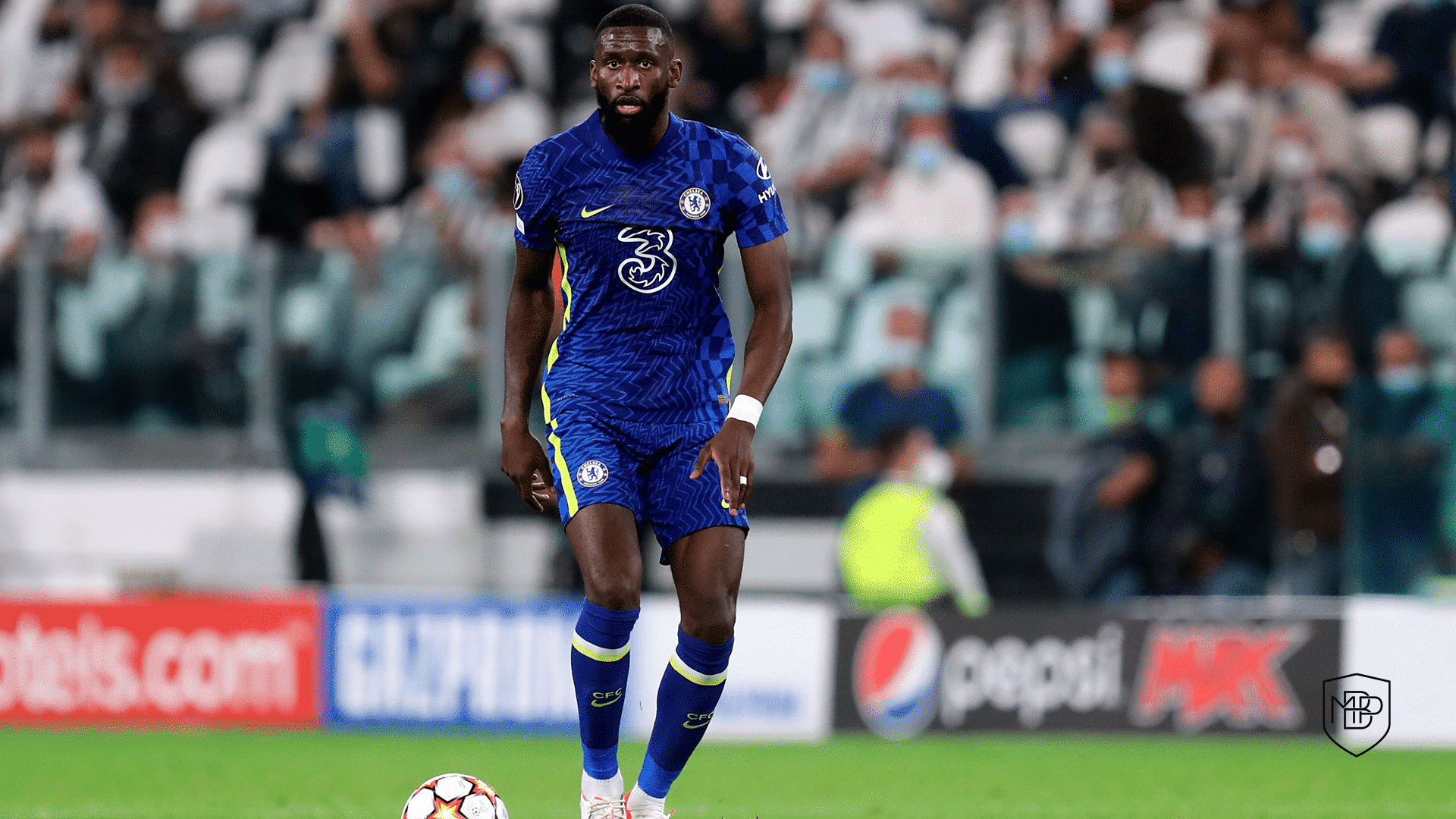When developing their game model, coaches must understand the system which will suit best the principles and sub-principles they want to apply in their team. While there is no perfect playing system, each one has its own pros and cons due to the basic spatial organisation of its players.
In the English Premier League this season, managers and head coaches have utilised a variety of different systems. Most interestingly, a number of teams including Chelsea, Wolves and surprise package Brentford have found much success with a playing system that incorporates a defensive line of 5 players.
At the MBP School of Coaches, we have set out to analyse these teams, studying the advantages and disadvantages that a system with a defensive line of 5 players brings. From examining this, we will also present the game fundamentals most commonly applied in the different actions this type of system uses.
Defensive Phase
The addition of another player in the defensive line can provide extra stability when the team is in the defensive phase. When performing the fundamental of ‘reducing the space to a forward dismarking in support to feet’, at times a centre back in a back 4 can be restricted in doing this due to the threat of another attacker dismarking into the space that they will leave.
For Chelsea, by having the extra defender, the increased protection affords their defenders to aggressively step out to these attackers. As the images show against Arsenal, Azpilicueta can push out to the opponent receiving in between the lines, with the space being covered behind him by James and Christiansen.


In addition to this, having the extra centre back also provides greater support in defending crosses. By having one more player in the penalty area in these situations, the nearside centre back can apply another individual fundamental ‘As The First Center-Back, Defending The Front Post When There Are No Attackers To Mark’.
Brighton and Leeds used this to great effect against Burnley, a team who prioritise crosses in the finishing zone and aim to attack the area with two or more attackers. The inclusion of an additional defender is critical, since it will allow a better marking of the opponents that attack the box, whilst, at the same time, creating a free player to apply the aforementioned fundamental.

Whilst the spatial occupation of the defensive line provides various benefits, there are also trade-offs that impact the team in this phase. An opposition structure with high and wide wingers can fix wing backs into the defensive line, restricting their mobility to engage the ball in higher areas.
In structures such as a 5-3-2, due to the lack of spatial occupation in these deeper wide zones, the lack of access to the ball can cause issues, especially against teams who hold their full backs in deeper positions when in the attacking phase in Zone 2.
In the recent Chelsea vs Manchester City match, the away team did an excellent job of fixing Chelsea’s wingback Reece James and forcing the outside midfielder to jump to the full back. By doing this, Pep’s side were able to open up space in the central channel that could be taken advantage of by the free man in the attack.



There have been different ways teams have tried to counter this issue. Namely, Brentford’s wingbacks will commonly press the full back in Z2 and Z3, applying the individual winger fundamental of ‘High Defensive Pressure In Balls Out To The Opposition Full-Back On The Same Wing’.
When this action occurs, the other players in the defensive line must coordinate to reorganise the defensive line, in addition to taking different defensive references.
This mechanism places greater demand on the application of the defensive line fundamental ‘Maintaining The Balance In The Width Of The Defensive Line’. In the example shown, the far side centre back, Ajer, has not shifted over correctly, leaving large interlineal gaps within the line.


Attacking Phase
For the majority of teams that use 3 players in the first line of build-up, the spatial coverage of the first third of the pitch provides many benefits. The angles the 3 centre backs have in relation to the central channel offers more passing lines to teammates who occupy intervals inside the opposition’s structure. A greater number of connections automatically creates triangles and rhombus’, allowing passing lines to be generated much easier.
For teams like Chelsea, who use an associative style of play, these numerous connections make it easier for the team to play through the ‘third man’. Jorginho, who usually acts as one of the base players in the Chelsea midfield, is often the main link for Chelsea to play through to find this free player.



Whilst the numerical superiority of +1 can be effective when facing a 2-player pressing line, when playing against a structure with only 1 forward, less advantages can be taken from the excessive numerical overload.
Having an extra player in this line when not necessarily needed takes away a passing option from higher up the pitch. As there is one less advanced player, possession can become more predictable. Less forward options can cause possession to be circulated for longer periods in a U-shape, where the play is continually switched side to side as progression is unable to be found.
Furthermore, a GK who is capable of playing short and longer passes with their feet can perform the same role as the spare centre back, making his function in this phase of the game more redundant.
One solution to this problem is the application of the defensive line fundamental ‘Fixing The Opponent To Create Numerical Superiority’. The use of this can provoke a free player in a higher line, alongside, on most occasions, the formation of numerical or spatial superiority.
——————
As coaches, understanding the pros and cons of our team’s playing system is key. From analysing in depth the superiorities and the spatial occupation this type of system faces versus others, we become aware of the common situations the players will face and be required to solve through the game fundamentals.
In the Masters in High Performance course, coaches are able to study these fundamentals in greater detail, whilst also learn about the process of choosing the ones most essential to their own game model, in order to train and develop them in their sessions.







